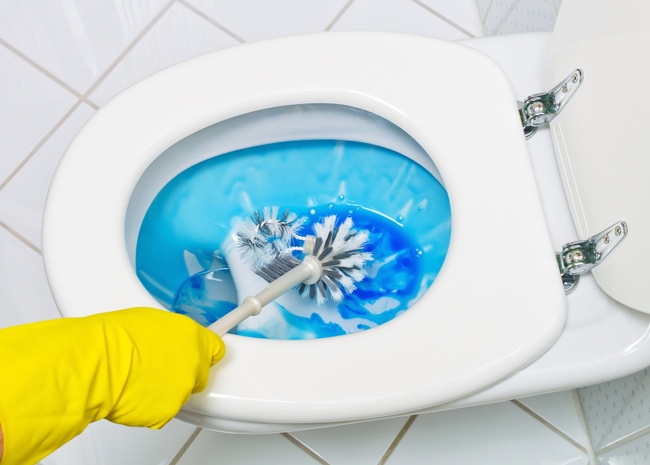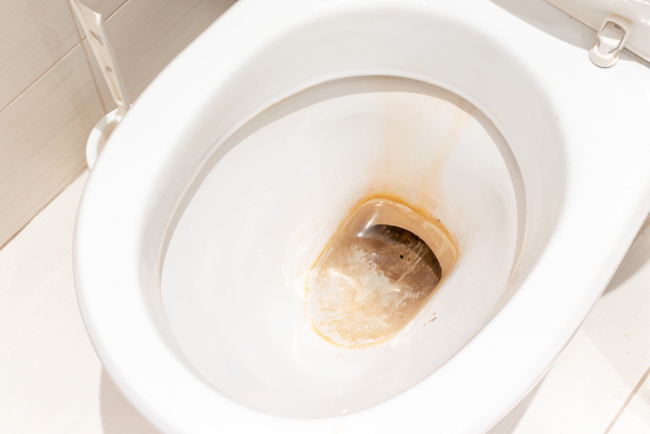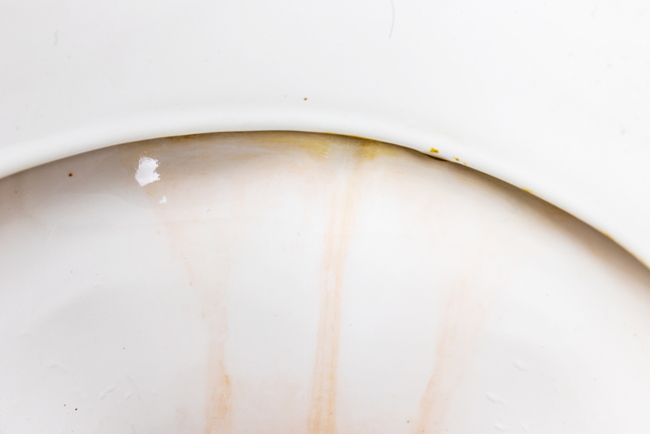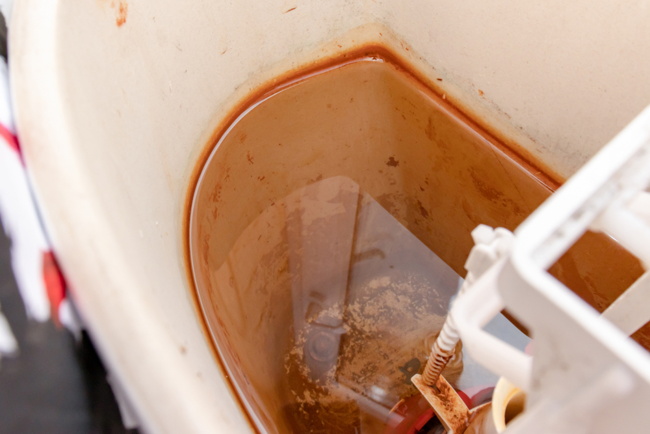Limescale is a deposit of calcium carbonate, it often builds up in kettles, boilers, pipework, and other surfaces where “hard water” has evaporated. Unlike milk, this calcium is a bit harder to flush away from your toilet bowl. If the build-up of bad limescale in your toilet is becoming an issue and you are unsure how to remove it, this practical guide from the End of Tenancy London cleaning team will inform you on the best methods to do so.
How to remove limescale from your toilet below the waterline

Bleach is a well-known household disinfectant, practically unchallengeable in killing most microorganisms; however, it is inefficient against these calcium deposits as it only lightens these dark stains. Cleaning limescale from your toilet, therefore, needs a little bit more help than just household bleach.
So how do you remove limescale from a toilet? The good news is we have found an affordable natural powerhouse for you – white vinegar and borax (sodium borate). By pouring this simple mixture into a bottle you can rid your toilet of calcium build up.
You may also like to read: 10 Ways to Use Vinegar Around the House
First, drain your toilet, spraying around the rim and into the toilet bowl. After leaving this to soak for a few hours, scrub with a toilet brush before flushing.
If you are experiencing a greater build-up of limescale in your toilet, use a pumice stone or steel wool when scrubbing – be careful not to scratch your bowl in the process. By continuing to do this once a week using 4 cups of vinegar and letting it sit overnight (it will not harm your septic tanks), you will soon be rid of limescale in your toilet.
How to remove limescale from your toilet bowl

Ridding thick limescale from your toilet bowl can be quite difficult and require a certain amount of elbow grease. Directly applying a stronger limescale remover can help remove these deposits, however, if these stains persist, look to purchase a heavy-duty powder cleaner containing phosphate or borax.
Remember you must never mix your cleaning product and always ensure you are wearing rubber gloves and advised eye protection. If you begin making limescale removal a part of your regular cleaning routine, leaving chosen areas to soak for as long as possible, your home will remain limescale clean.
How to remove limescale from your toilet rim

Even the toughest of limescale can be removed easily if you have access to the right products. Wherever there is water, natural occurring minerals can build-up residue and cause calcium deposits. The water jet openings underneath the toilet rim is no exception to this rule. Millions of bacteria form here and can become a health concern if left untreated. Not only that, but it can also interfere with the flow of water, thereby reducing the efficiency of your toilet.
We advise creating a solution that is one-part bleach and 10 parts water. Pour this solution into the overflow tubes by removing the tank lid. Let this soak for about 5 minutes and then flush. Afterwards, get a piece of wire and scrape out each jet hole, cleaning around the jets with a chemical bowl cleaner and sandpaper (remember to be gentle and not to scratch your toilet). Finally, add the bleach solution into the overflow tube (allowing time to soak) and flush one last time.
Please note: These chemicals can deteriorate rubber parts of the tank so make sure to not do this often.
How to remove limescale from your toilet U-bend
First things first, U-bends are notoriously hard to reach, we recommend you have the correct PPE such as gloves, protective eyewear, and a small brush before using any remedy. All the mixtures above work well for cleaning out U-bends in your toilet – it just needs more elbow grease.
How to remove limescale from your toilet cistern

If you live in an area with hard water, it is important to keep the inside of your toilet limescale free.
You can achieve this by draining the water out of your toilet tank and disinfecting the inside of it with toilet cleaner or bleach spray, leaving it to soak for roughly 20 minutes. Remember to scrub the corners, crevices and walls of your toilet tank and drop a toilet cleaning tablet inside your tank to keep it clean and refreshed. Do this once a month and you will to finally be victorious over that irritating build-up of limescale.
The harder the water in your area, the more likely you are to find limescale. If you would like to find out if you are in an area that has hard water, check out this handy water tool by Bristan which shows the areas of the UK most affected.
As you can see, removing limescale from your toilet is a fairly straightforward process. However, if you value convenience and time, hiring a professional to clean your bathroom may be the best option for you.
As cleaning experts, we know every trick in the book about how to get rid of limescale successfully. If you require any help with removing limescale from your toilet, do not hesitate to get in touch with any questions, or to arrange an appointment for us to help.
